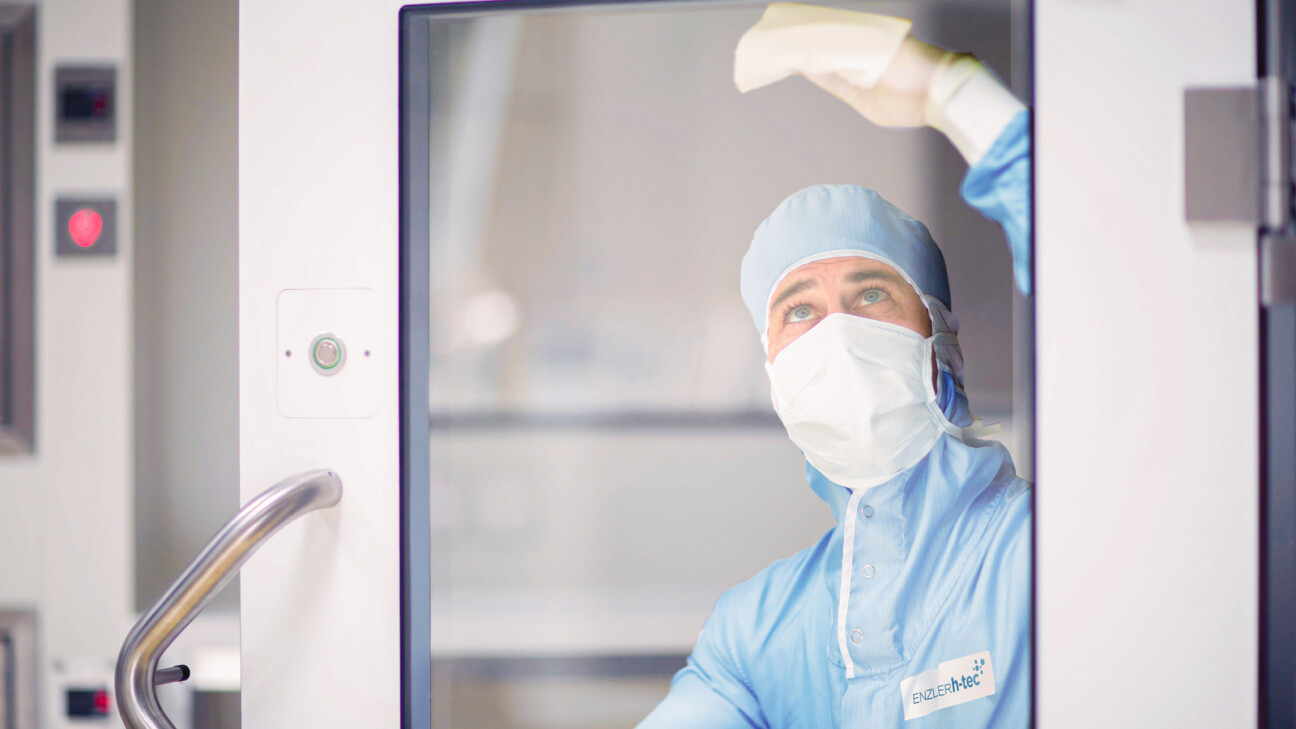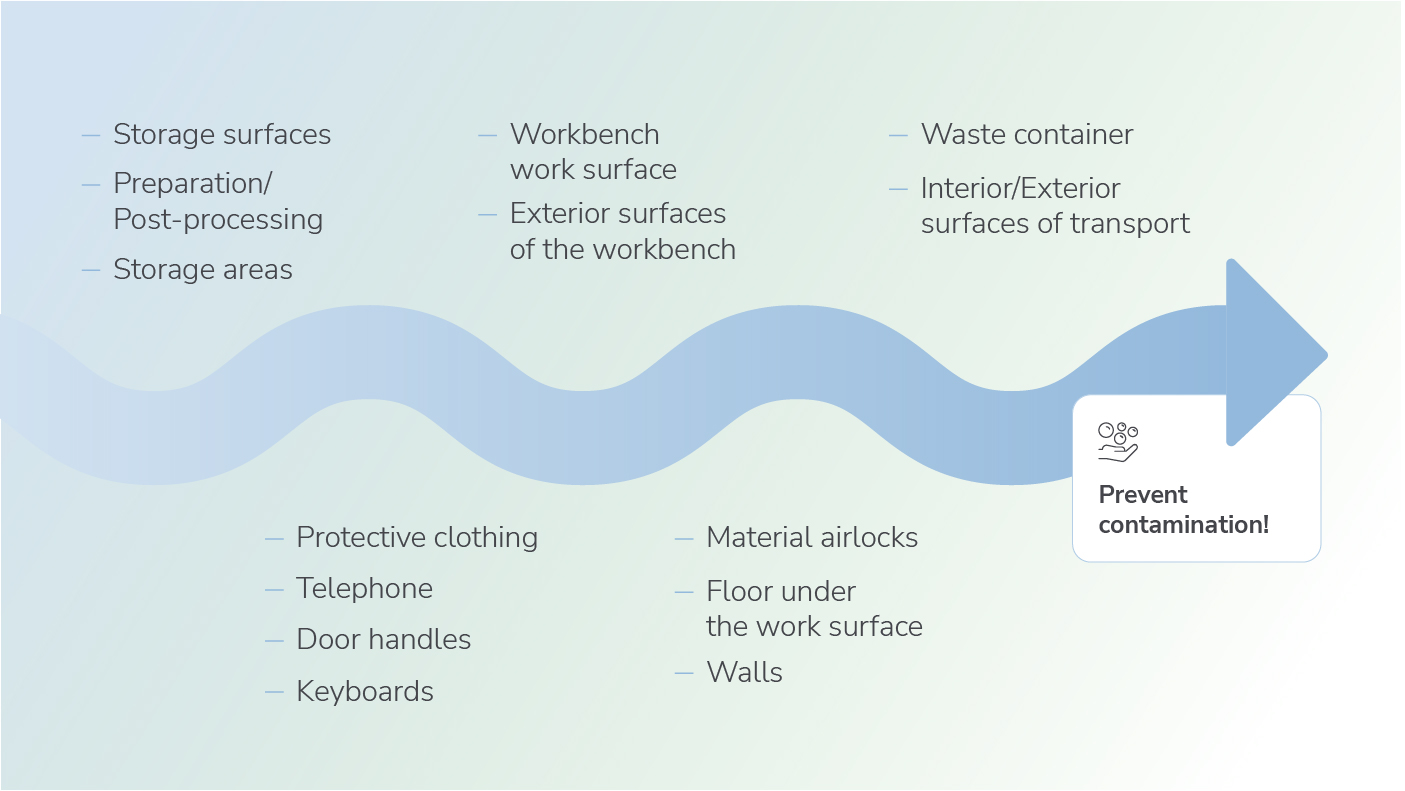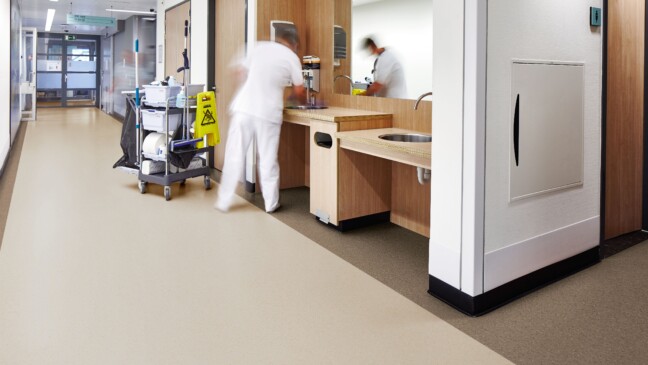
10.01.24
Protection against health hazards when handling cytostatics
As glad as we are today about the therapeutic effect of cytostatics in the treatment of cancer, they can be dangerous for healthy individuals. This article presents the appropriate measures and how to assess their effectiveness, as well as what is involved in professional removal.

If a patient is affected by cancer, different treatment methods such as surgical removal, radiotherapy or chemotherapy are usually used and often combined with each other. In chemotherapy, the drug can interact with the DNA, RNA or protein synthesis of the body’s own proliferating cells. This prevents the division or proliferation of cancer cells. This effect is naturally desired by the cancer cells. Unfortunately, however, the same points of attack apply to both healthy and tumor cells and this is what makes the use of cytostatic drugs, as the active ingredients of chemotherapy are also known, so dangerous. Of course, this also endangers healthy people who come into contact with these cytostatic drugs. For this reason, cytostatic drugs are a potential health hazard for healthy people.
Acute contact with cytostatic drugs can have a corrosive or irritant effect as well as damaging the eyes or irritating the respiratory tract. They are also classified as CMR substances, which means that they can be carcinogenic (C), mutagenic (M) or toxic for reproduction (R). People who come into contact with these substances must be protected and any risk must be avoided. The central question now is:
How can healthy people be protected from the health risks posed by cytostatic drugs?
On the one hand, organizational measures can be taken. A concept for the prevention of hazards from A to Z, i.e. across the entire process including transportation, storage, disposal and cleaning, must be drawn up. This is usually done by the safety officer for occupational safety. In general, it is advisable to ensure that as few healthy people as possible come into contact with cytostatic drugs in order to expose as few people as possible to a hazard. Minors and pregnant or breastfeeding women must be prohibited from coming into contact with cytostatics. All persons who handle cytostatic drugs must also be trained. It is important to remember to include not only those who process and administer these drugs to patients in the concept and training, but also the maintenance and cleaning staff. During the training, the relevant work techniques and the appropriate cleaning work are taught in theory and preferably also practiced in practice. It is important that the participants and their working environment are specifically addressed and that local conditions are incorporated into the training.
On the other hand, technical measures must also be taken to prevent occupational illnesses. This means providing a locked room for handling these active substances wherever possible. This should be clearly marked and, above all, lockable during the production and handling of cytostatics. The use of a safety cabinet (e.g. class II according to DIN12980) or an isolator is recommended. In addition, personal protective measures should be used. In addition, preventive measures should be taken by the medical staff, but also in the event of a spillage.
In order to be able to correctly assess the health risk and check the effectiveness of the organizational and technical measures, this risk must be systematically determined. To this end, the exposure determination is evaluated with the help of monitoring. Appropriate environmental monitoring with clean air measurements and wipe samples on surfaces at the suspected focal points of exposure is the first step. The focal points of exposure have been identified either by analyzing the (standardized) process or by comparing it with similar workplaces. If the process is used as a basis, it must be analyzed for possible causes of carryover. This monitoring should be carried out over a longer period in order to be able to identify anomalies over a longer period.
In addition to environmental monitoring, biomonitoring with the exposed persons is recommended. This allows the exposure and health risk of the individual persons to be identified and assessed. This then also serves as a reference for the occupational health assessment following a spillage or other incident. The following table roughly summarizes the most important points in bio- and environmental monitoring:
| Environmental monitoring | Biomonitoring |
| Indoor air measurements, Wipe samples on surfaces | Exposure monitoring, Effect monitoring |
| Selection of the wiping surfaces to be sampled | Occupational health screening |
| – Exposure focus | – Degradation products in blood/urine |
| – Comparison with similar workplaces | – Detection of internal exposure |
| – Consider possible carry-over | – Occupational health assessment after incidents |
| – Monitoring over a longer period of time |
The informative value and therefore also the quality of the environmental monitoring is only as good as the appropriate choice of sampling locations and the frequency of when and where the samples are taken for monitoring. Not only must the entire process be taken into account here, as in the concept creation, but also the other points that could pose a risk to people’s health if they are carried over. It is therefore necessary to identify the exposed points throughout the entire process, from delivery of the cytostatics, storage, processing and disposal, and at the same time to consider where and where these can be transferred. The immediate environment plays a potentially hazardous role here, especially at the workbench (e.g. the floor under the work surface), but people themselves also pose a risk. They can inadvertently spread cytostatic drugs via protective clothing or contact with the environment, e.g. telephone, door handles, keyboards. The following diagram illustrates schematically what should be considered in the sampling strategy.

Even if you have established an excellent concept and seamless monitoring, the workplace where the cytostatics are processed must be cleaned. This must also be regularly trained or carried out by specialists. This cleaning training and the associated hygiene concept should also be workplace-related and defined in a standard operating procedure (SOP). This SOP often prescribes cleaning with 0.1 M sodium hydroxide solution or another alkaline cleaner, followed by two rinses with deionized water and subsequent disinfection with alcohol (e.g. 70 % isopropanol). Here, too, it is important to keep an eye on the entire process and to clean the storage areas as well. Proper disposal and documentation of the cleaning process complete the process.
Cytostatics and chemotherapy are an important and potent component in the fight against cancer. In order to protect people’s health from the risk of accidental contact, organizational and technical measures must be taken, suitable bio- and environmental monitoring must be introduced, the people concerned must be systematically and repeatedly trained and professional cleaning must be established.
We are happy to help you with the removal of cytostatic drugs: Cytostatic removal | Enzler Hygiene AG..
References
- L. Weber: Gefahrstoff Zytostatikum. Onkologiepflege, 03, 2020
- S. Gnanasekaran, David Chaperon: Zytostatika-Entfernung: Warum es von Profis gemacht werden soll. Clinikum 4, 2023
- M. Jost, M. Rüegger, B. Liechti, A. Gutzwiller, Sicherer Umgang mit Zytostatika, Suva, 2/22
- Dr. André Heinemann, BGW- Bereich Gefahrstoffe und Toxikologie: Zytostatika im Gesundheitsdienst: Informationen zur sicheren Handhabung 02/2019
- Antje Heise: Zubereitung von Zytostatika in Apotheken: Untersuchungen zur Arbeitsplatzkontamination, Dissertation Ludwig-Maximilians-Universität zu München 2006

